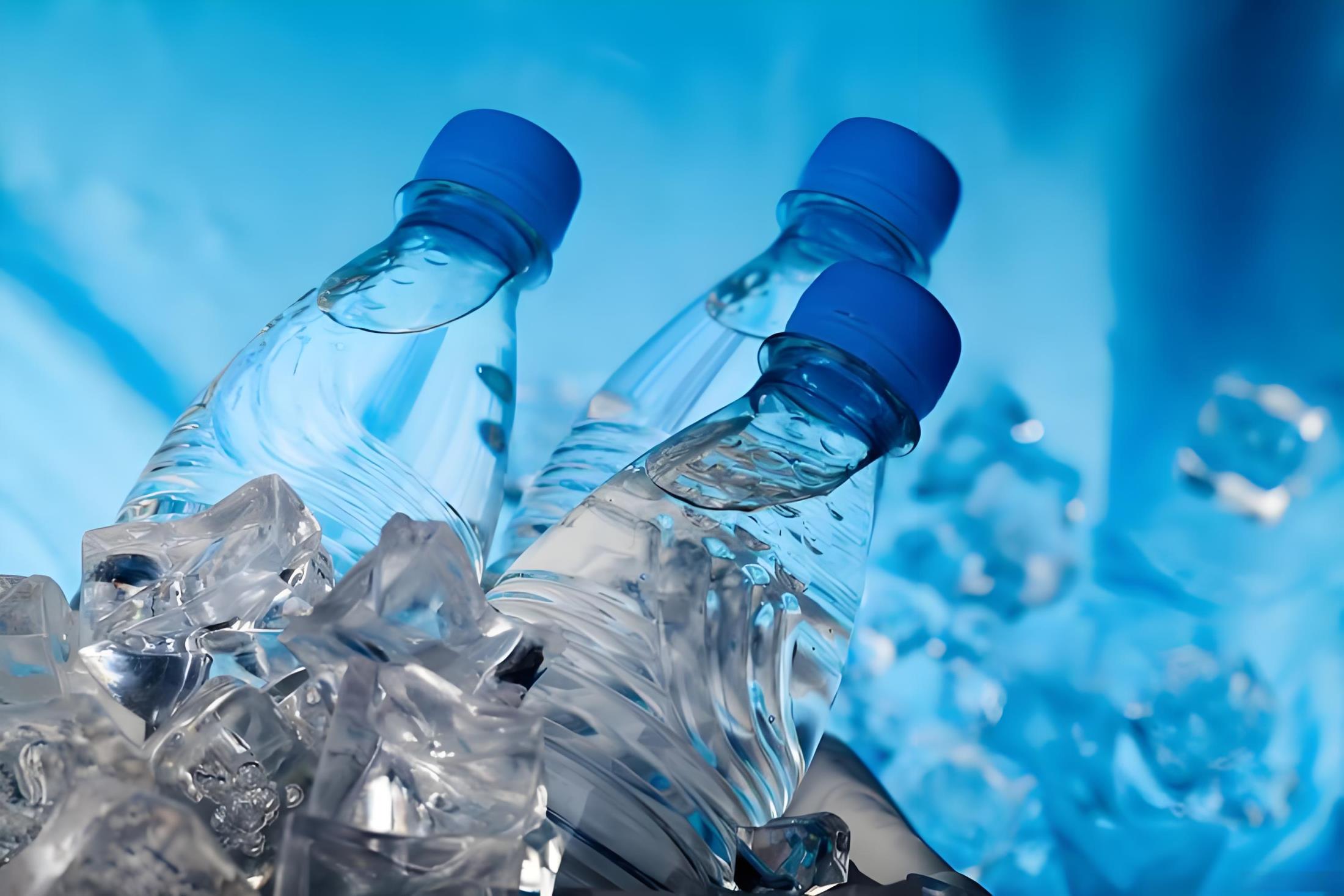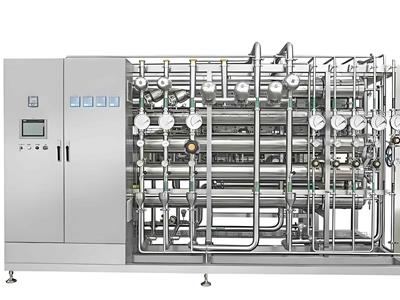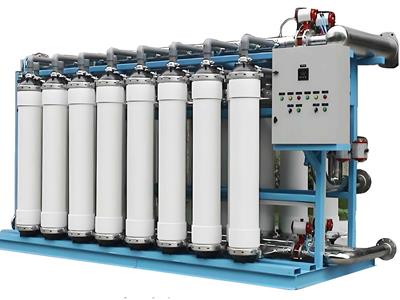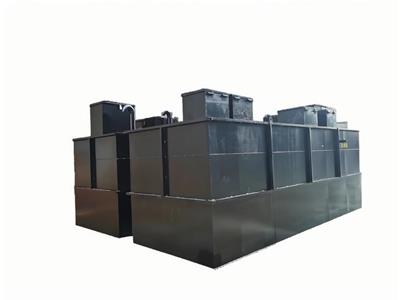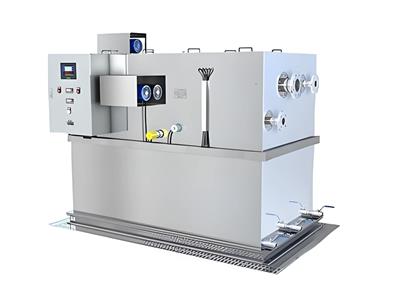- 2025-07-25
Purified water vs distilled water, which one is better?
In the field of water treatment, both purified water and distilled water have undergone special process treatment, and both have high purity, and are widely used in daily life and production. However, what are the differences between these two types of water? Which one is better?
What is the difference between purified water and distilled water?
Purified water
Water purification is the process of removing pollutants such as pathogens, microorganisms, heavy metals, organic matter, soluble salts, suspended solids and colloids in water to obtain safe and pure water.The sources of purified water include groundwater, rivers, seawater and tap water. Treatment methods include chemical, biological and physical processes, such as coagulation, sedimentation, filtration, ion exchange, membrane filtration and ultraviolet disinfection.Because different application scenarios and industries may have different requirements for purified water quality standards, different purification methods must be used. Generally speaking, the water quality standards for purified water are formulated by national and international organizations to ensure the quality and safety of water used in various fields.
Distilled water
Distilled water is actually a kind of pure water. Its most critical processing steps are heating and distillation. The basic processing process is similar to other pure water. Distilled water is the purest pure water, without impurities and dissolved substances.
Differences between the two in preparation process, water quality, application and price
Preparation process
The treatment method of pure water will vary according to the application scenario and needs. Common water purification methods include ion exchange, reverse osmosis, nanofiltration, distillation, etc.
Ion exchange: Ion exchange equipment uses cation exchange resin to replace calcium and magnesium ions in water, and then uses anion exchange resin to replace sulfate and chloride ions, so that deionized water can be obtained.
Reverse osmosis: Reverse osmosis filters are based on the principle of reverse osmosis. By applying pressure, water molecules pass through a semipermeable membrane, thereby removing impurities and dissolved salts in the water.
Nanofiltration: Nanofiltration membranes have selective permeability, which allows water molecules and certain beneficial minerals to pass through, while removing larger ions and pollutants, thus obtaining nanofiltration water.
Distillation: Distilled water is produced through a distillation process that takes advantage of the different boiling points of water and soluble impurities. When heated, the water evaporates, leaving behind most of the impurities. The vapor is then condensed back into liquid in a condenser, resulting in high-purity distilled water.
Water Quality
Pure water and distilled water have different total dissolved solids (TDS) levels, which is a key indicator for evaluating water quality. Generally speaking, water with a TDS below 10ppm is considered pure water, while distilled water usually meets the TDS standard of 1-5ppm.In addition, conductivity is also an important indicator for evaluating the content of dissolved substances in water. The lower the conductivity, the less dissolved salts and minerals, and the better the water quality. Types of purified water include nanofiltration water, reverse osmosis water, deionized water, and distilled water, each with different conductivity levels.Different types of pure water Conductivity (μS/cm)
Distilled water: 0.5 – 2
Deionized water: 0.1 – 1
Reverse osmosis water: 5 – 20
Nanofiltration water: 20 – 100
Application
Pure water has a wider definition, richer types, and a wide range of applications. From household drinking water to food processing and industrial production, pure water plays an indispensable role.
Household drinking water: Ensure the health and safety of family life.
Food processing: Can maintain the quality and taste of the product.
Industrial production: Can be used as cooling water in industrial production to prevent equipment scaling and ensure stable operation of equipment.
Unlike pure water, distilled water has a more specific application range and is mainly used in industries with particularly strict requirements on water quality:
Laboratory and chemical analysis: In scientific research and chemical experiments, distilled water can avoid chemical or microbial contamination.
Pharmaceutical industry: Distilled water is critical to ensuring the quality and safety of drugs. For example, purity is very important in the production line of soft capsules.
Electronic industry: Distilled water is required to have extremely low ion and microbial content to prevent damage to electronic components.
Food manufacturing: Some foods require distilled water to ensure the quality and taste of the final product.
Cosmetic industry: Distilled water is often used as a solvent to enhance the absorption of products into the skin.
Price
Different water purifiers and different brands provide different water quality standards, so the prices vary. The production process of distilled water is very complicated and requires multiple equipment such as distiller, heating device and condenser. In addition, distillation consumes a lot of energy. It is necessary to heat the water to boiling point and then condense it into steam, which leads to high operating and maintenance costs and relatively low water production.For example, compare reverse osmosis systems and water distillers: a 10LPH water distiller generally costs between $200 and $400, while a 10LPH reverse osmosis system costs between $150 and $300. In addition, a 100LPH water distiller costs between $2,000 and $4,000, while a 100LPH reverse osmosis system costs about $1,000 to $3,000.Therefore, for applications that require a large water flow, such as industrial and commercial uses, it is more cost-effective to purchase or customize water purification equipment considering investment, operation and maintenance costs. However, for applications with higher water quality requirements and lower water flow requirements, such as laboratory environments, distilled water equipment is more suitable.
Advantages and Disadvantages of Purified Water and Distilled Water
Purified Water
Compared with raw water sources such as tap water, purified water has been more deeply processed to the level of deionized water, and the pollutant removal rate can be as high as 99%. This greatly improves the safety of the produced water, making it more suitable for various industrial uses.
Advantages of direct drinking water for home use:
It can remove viruses, bacteria and other harmful microorganisms in water.
It can eliminate harmful chemicals such as chlorine and prevent disinfectant odors in water.
Contains minerals that are beneficial to human health.
It is safe for babies, plants, sinus rinses, and suitable for humidifiers.
Advantages for industrial and commercial applications:
It is suitable for the cleaning industry to prevent water stains and spots.
It is good for animal health and plant maintenance, such as in aquariums and gardening.
It can inhibit bacterial growth and ensure the safety of the food and beverage processing industry.
It maintains the efficiency and life of the battery by interfering with the chemical reactions between impurities.
However, a large amount of sodium ions may be introduced during the water treatment process, which is not good for patients with high blood pressure and cardiovascular disease, and may increase the risk of heart disease and stroke. Although purified water contains some minerals, it is still possible to cause electrolyte imbalance in the body, destroy osmotic pressure, and affect the normal function of organs.
Distilled water
Distilled water is highly pure and has most of the advantages of pure water, making it suitable for high-precision equipment systems. Moreover, distilled water does not contain minerals and is also friendly to patients with kidney stones and people with low immunity.However, for the general population, distilled water may not be suitable for long-term drinking:
Long-term drinking may cause the body to lack certain minerals, and more attention should be paid to a balanced diet.
Removing fluoride from water increases the risk of tooth decay.
High energy consumption and high cost.
Low water resource utilization efficiency and not environmentally friendly.
Like pure water, related equipment needs to be cleaned and maintained regularly.
Which is better, distilled water or purified water?
There is no absolute difference between purified water and distilled water, and each is suitable for different situations. It is wise to choose the right water according to different uses, costs and water production needs.For daily drinking, purified water is usually considered more suitable. Purified water has a balanced mineral content, tastes better, and is also good for health. Moreover, purified water systems are generally more economical and affordable, with lower operating costs and easier operation and maintenance than distilled water.For applications where purity is important but water demand is not very high, such as scientific experiments, medical equipment, and certain industrial processes, it is recommended to use a laboratory-grade distillation unit or purchase bottled distilled water.
FAQ
Is reverse osmosis water the same as distilled water?
As mentioned earlier, reverse osmosis (RO) water is produced using RO filters. RO water is treated to remove most dissolved substances and microorganisms, with high production efficiency and good water quality, but it cannot completely remove all dissolved substances.Distilled water uses the difference in boiling points between water and dissolved substances to fully separate water and impurities, so it can achieve higher purity than reverse osmosis water. How to choose between the two depends on the water quality standards required. Read this article to learn more about distilled water and reverse osmosis water.
What minerals are added to purified water?
Depending on the health needs of the body, some water treatment manufacturers will add minerals to water, such as calcium for bone and tooth health, and potassium for cell function, fluid balance, and heart health.
What does mineral water mean?
Mineral water comes from mineral springs and is naturally rich in minerals and trace elements, such as calcium, magnesium, potassium, and sodium. These minerals are dissolved into the water as it flows through rock and soil layers. The bottled mineral water we usually drink is collected directly from natural springs and wells and then bottled.
Mineral Water vs. Alkaline Water?
Alkaline water refers to water with a pH value higher than neutral (pH = 7), which is generally obtained by adding alkaline minerals or through an ionization process. Alkaline water usually contains substances such as calcium, magnesium, potassium, and bicarbonate ions. In contrast, mineral water has a richer mineral content and is naturally present.Mineral water is considered to be beneficial to health and can support overall health, while the health benefits of alkaline water have not been fully confirmed by scientific research.

